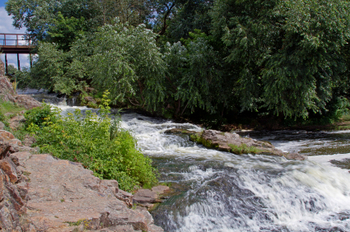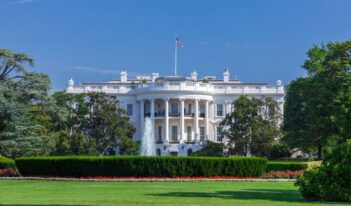
House bills would roll back rather than advance progress on water quality.
Forty years ago, a far-sighted and creative Congress enacted one of the most transformative statutes in history: the Clean Water Act. The Act nationalized the business of water pollution control, relegating the states to a secondary, supporting role, and used traditional regulatory techniques to implement a new, uniform system of technology-based effluent limitations. These limitations, supplemented when necessary by reference to water quality standards, were enforced through a massive new permit system. The Act also set the stage for a comprehensive new program to protect wetlands and created an ambitious public works program to fund the construction of thousands of new municipal wastewater treatment facilities.
The strategy embodied in the Clean Water Act has proven remarkably successful. The amount of pollution discharged by both municipal and industrial facilities has fallen sharply, the loss of wetlands has been cut by 90 percent, and water quality has broadly improved across the entire nation. The Act, however, is showing its age. Twenty-five years have passed since it was amended in comprehensive fashion and more than a little legislative fine-tuning must be done to complete the task that began in 1972. While it is true that more robust administrative action could improve the effectiveness of the Act in a number of ways, the most serious problems cannot be solved without congressional action.
At the top of the list is the jurisdictional scope of the Clean Water Act. Congress needs to restore the Act’s jurisdiction to the breadth that it enjoyed before the Supreme Court issued its decisions in SWANCC and Rapanos, decisions that narrowed the Act’s jurisdiction in such a way that many formerly protected wetlands, headwaters, and intermittent streams are now in danger of serious degradation.
The Clean Water Act has also never adequately addressed our most significant remaining source of pollution problems: non-point sources. Non-point sources include the indirect discharge of polluted runoff from fields and lawns, paved areas and clear-cuts, septic tanks and abandoned mines. Instead of addressing non-point sources in any straightforward manner, the Act left the control of this aspect of water pollution primarily in the hands of state and local government, and they have generally chosen to use voluntary management practices rather than traditional regulation to try to control these diffuse sources of pollution. As a result, pollution from nonpoint sources has evolved into the nation’s number one pollution problem, transcending the problems posed by either municipal or industrial wastewater discharges. It is time for Congress to strengthen the regulation of nonpoint sources, especially since climate change will only exacerbate the problem by causing more frequent and severe precipitation events in many areas of the country that will only increase water pollution from runoff.
A number of other water pollution problems also remain, problems that call out for congressional attention. The nation’s infrastructure for collecting and treating municipal wastewater, for instance, is gradually decaying while the population grows, and sanitary sewer overflows and combined sewer overflows continue to plague thousands of urban waters. Stormwater discharges still contribute to serious water quality problems in many places, and we continue to lose nearly 60,000 acres of valuable wetlands every year.
The EPA’s efforts to update discharge limitations have been hindered by inadequate funding, while permit compliance remains too high and state enforcement too inconsistent. An important enforcement device, one that can fill part of the gap left by anemic government action, is the citizen suit, but its use has been hampered in a number of ways including the denial of standing to private attorney generals who attempt to enforce against wholly past violations.
In addition, the water quality standards program has too often focused upon the chemical integrity of the nation’s waters, giving relatively scant attention to the setting of environmental flows that mimic natural flows—an essential step in protecting the biological integrity of the nation’s waters. Watersheds, moreover, should be protected in a more holistic fashion from the harms caused by habitat modifications—such as the removal of vegetation from stream banks or the actual burying of streams—and hydrologic modifications—such as channelization projects and impoundments.
Despite the need for legislation to address these imperfections in a statutory scheme that has otherwise proved remarkably successful and resilient, Congress has been unable to enact any positive legislation related to water pollution since 1987. The current prospects for passage of any such legislation remain poor. In fact, the momentum has shifted to those who would weaken the protections provided by the Clean Water Act. Since January 2011, the House of Representatives has voted in favor of several bills and riders designed to obstruct effective environmental regulation. One bill in particular, the Clean Water Cooperative Federalism Act, was designed to retard additional progress under the Clean Water Act. Although these bills have not been enacted, they demonstrate a disconcerting disconnect in American politics. While the majority of Americans favor vigorous environmental protection, the majority of members of the House apparently do not.
The challenge facing those favoring continued environmental progress is translating broad, but admittedly rather shallow, public support into strong, tangible support for comprehensive legislative action. The key to meeting this challenge, however, is fairly clear. We need active and informed citizens, engaged professionals, and a press that is able and willing to dig into environmental issues in a thoroughly objective and factual way.
To do this, we may want to take a cue from those who have sought to challenge many of the underlying premises of modern environmental law. Beginning in the mid-1970s, many conservative business leaders and foundations, recognizing the importance of the marketplace of ideas, embarked upon a long-term campaign to influence public opinion and the national press about environmental policy. Think tanks were created or strengthened, publications launched, research centers established, and fellowships created to support scholars, social scientists, lawyers, economists, and writers who would promote ideas sympathetic to their conservative point of view. In doing so, they sowed the seeds of a powerful intellectual movement that is anti-regulatory in its focus and in favor of “reforming” the nation’s environmental law.
While the environmental community may never have the resources necessary to replicate that intellectual edifice, it does enjoy the support of thousands of professionals in many different disciplines. With adequate funding, those scientists and economists, social scientists, and historians could create non-profit, educational, and research organizations that inform Main Street as well as Washington about the environmental issues and problems we face today. This means, of course, that these professionals would have to take some time away from their normal academic or professional pursuits, but the stakes could not be higher. Battles in Washington, after all, are not ultimately won or lost on Capitol Hill, but by the way people think and feel and vote on Main Street.




